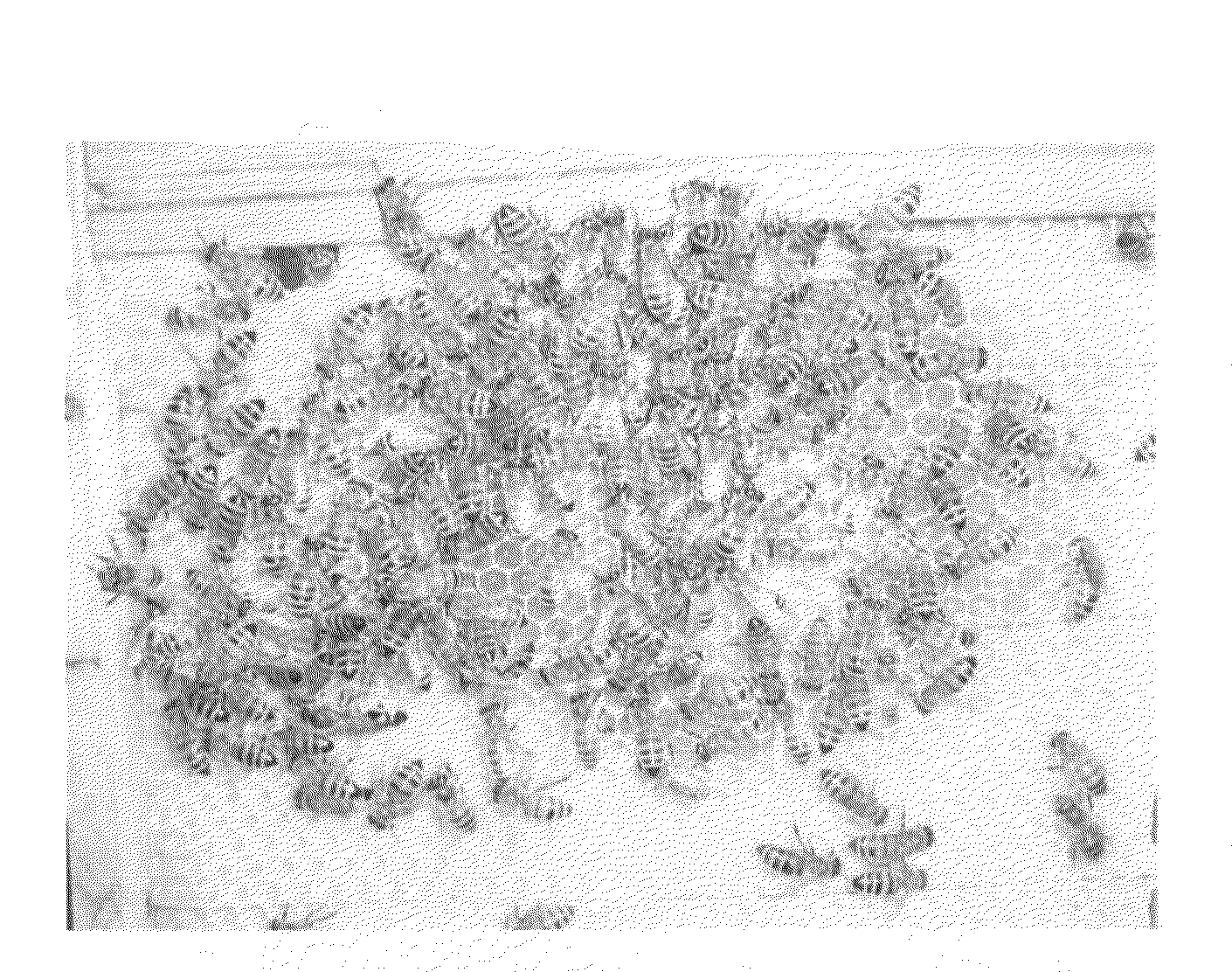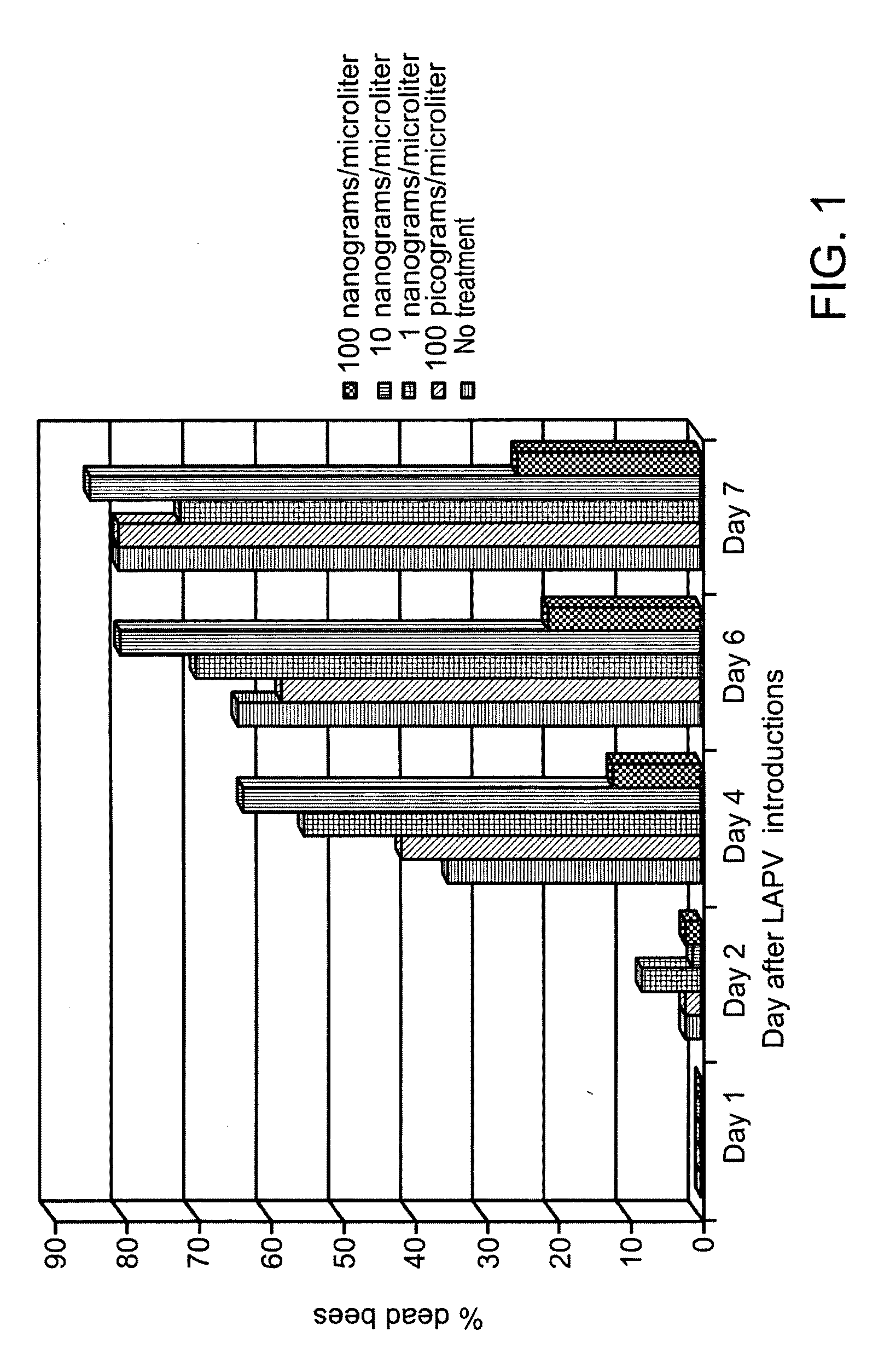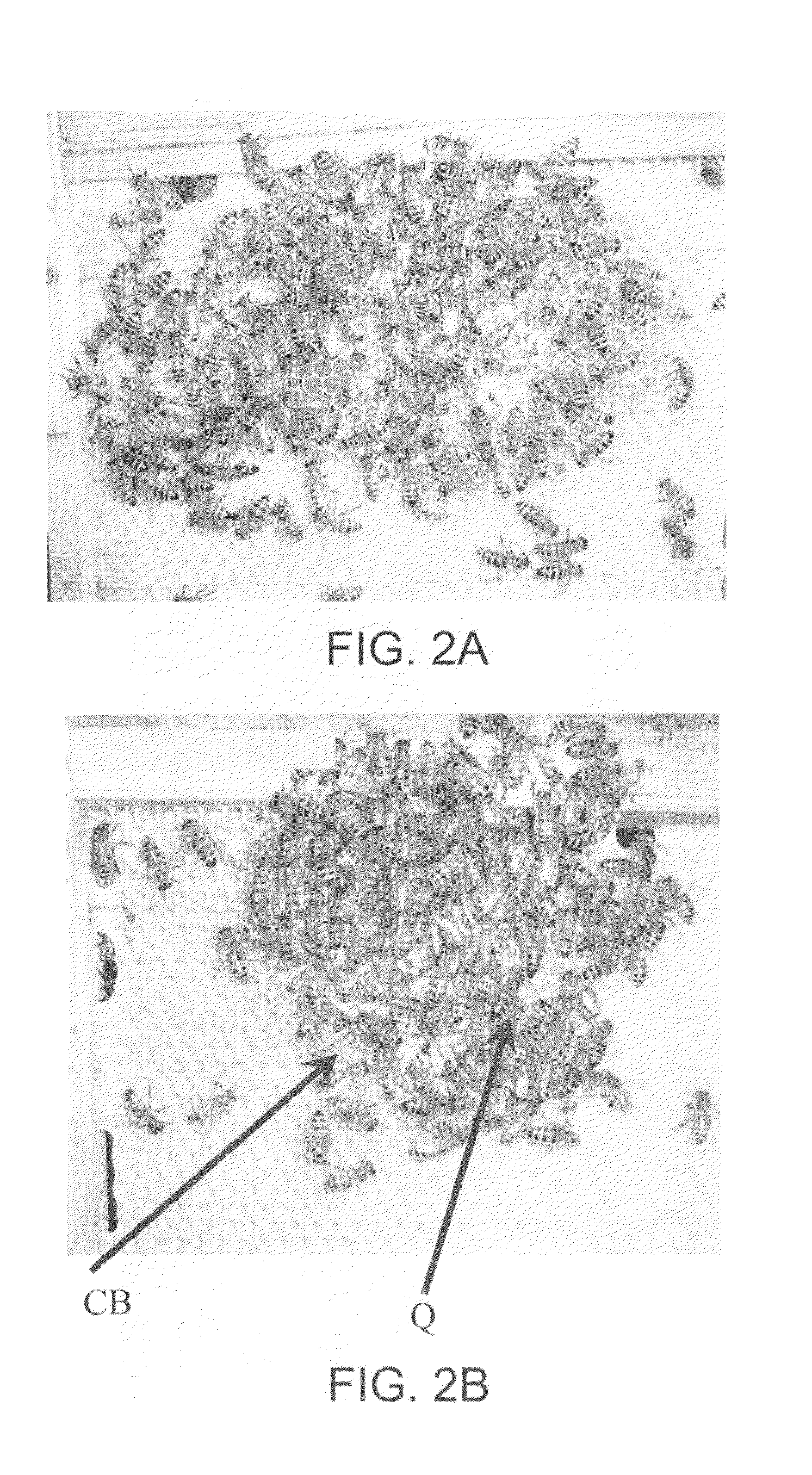Compositions for conferring tolerance to viral disease in social insects, and the use thereof
a social insect and composition technology, applied in the direction of viruses/bacteriophages, drug compositions, genetic material ingredients, etc., can solve the problems of high horizontal transmission or amplification of existing infections, the threat of annihilation of the u.s. and world agriculture by the colony collapse disorder (ccd) of honeybees, and no effective preventative measures have been developed to da
- Summary
- Abstract
- Description
- Claims
- Application Information
AI Technical Summary
Benefits of technology
Problems solved by technology
Method used
Image
Examples
examples
[0149]Reference is now made to the following examples, which together with the above descriptions illustrate some embodiments of the invention in a non limiting fashion.
[0150]Generally, the nomenclature used herein and the laboratory procedures utilized in the present invention include molecular, biochemical, microbiological and recombinant DNA techniques. Such techniques are thoroughly explained in the literature. See, for example, “Molecular Cloning: A laboratory Manual” Sambrook et al., (1989); “Current Protocols in Molecular Biology” Volumes I-III Ausubel, R. M., ed. (1994); Ausubel et al., “Current Protocols in Molecular Biology”, John Wiley and Sons, Baltimore, Md. (1989); Perbal, “A Practical Guide to Molecular Cloning”, John Wiley & Sons, New York (1988); Watson et al., “Recombinant DNA”, Scientific American Books, New York; Birren et al. (eds) “Genome Analysis: A Laboratory Manual Series”, Vols. 1-4, Cold Spring Harbor Laboratory Press, New York (1998); methodologies as set...
example i
Effect of IAPV Virus Titer on Survival of Honeybees
[0151]In order to determine whether bees are differentially sensitive to IAPV, the effect of virus titer on bee survival was tested. Bees were introduced into plastic containers and exposed to increasing concentrations of IAPV (in feed solution).
[0152]Survival of the bees in the hive was monitored over a period of 7 days.
Materials and Methods
[0153]50 bees were introduced into 0.5 liter plastic containers, or 30 bees into 0.25 liter plastic containers.
[0154]All containers were prepared in advance to accommodate air flow and enable feeding with sucrose solution and water. The bees were kept in the dark at a constant temperature of 30° C., and were fed once daily with 2 ml 50% sucrose solution and 1 ml water introduced into reservoirs in the containers.
[0155]IAPV was introduced into the sucrose solution, in increasing doses (0.0001 to 0.1 microgram / microliter) in 900 microliters sucrose solution added to the sucrose: Vertical striped ...
example ii
Feeding Viral-Specific dsRNA Prevents Acute Disease of Honeybees Caused by IAPV
[0158]In order to determine the effectiveness of ingested IAPV dsRNA on viral infection, honeybees were provided with IAPV-specific and control dsRNA in the feed for 4 days before, and 3 days following infection with IAPV virus. Numbers of dead bees per experimental hive were counted, and sample live and dead bees were collected for molecular analysis.
Materials and Methods
[0159]Establishment of mini-hive colonies: Young, approximately 2-month-old queens, together with approximately 200 worker bees were collected from hives in a local apiary. The bees were transferred into mini-hives fitted with one mini comb that was previously built by a regular hive. All of the mini-hives were closed and placed in a temperature-controlled room (30° C.).
[0160]dsRNA preparation: IAPV sequences corresponding to the intergenic region (bases 6168-6594; gi|124494152; 426 b SEQ ID NO: 33) and to a viral sequence known to integ...
PUM
| Property | Measurement | Unit |
|---|---|---|
| concentrations | aaaaa | aaaaa |
| temperature | aaaaa | aaaaa |
| nucleic acid | aaaaa | aaaaa |
Abstract
Description
Claims
Application Information
 Login to View More
Login to View More - R&D
- Intellectual Property
- Life Sciences
- Materials
- Tech Scout
- Unparalleled Data Quality
- Higher Quality Content
- 60% Fewer Hallucinations
Browse by: Latest US Patents, China's latest patents, Technical Efficacy Thesaurus, Application Domain, Technology Topic, Popular Technical Reports.
© 2025 PatSnap. All rights reserved.Legal|Privacy policy|Modern Slavery Act Transparency Statement|Sitemap|About US| Contact US: help@patsnap.com



